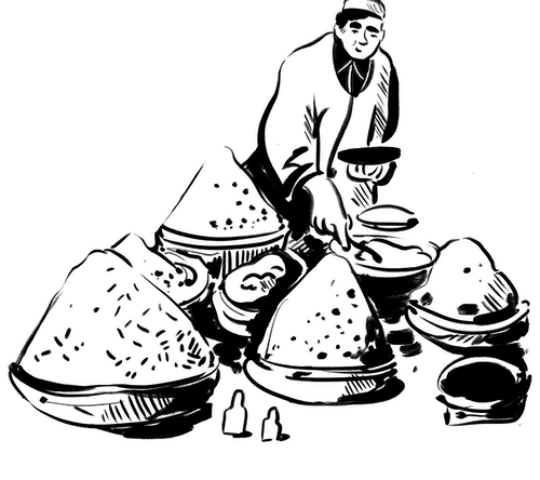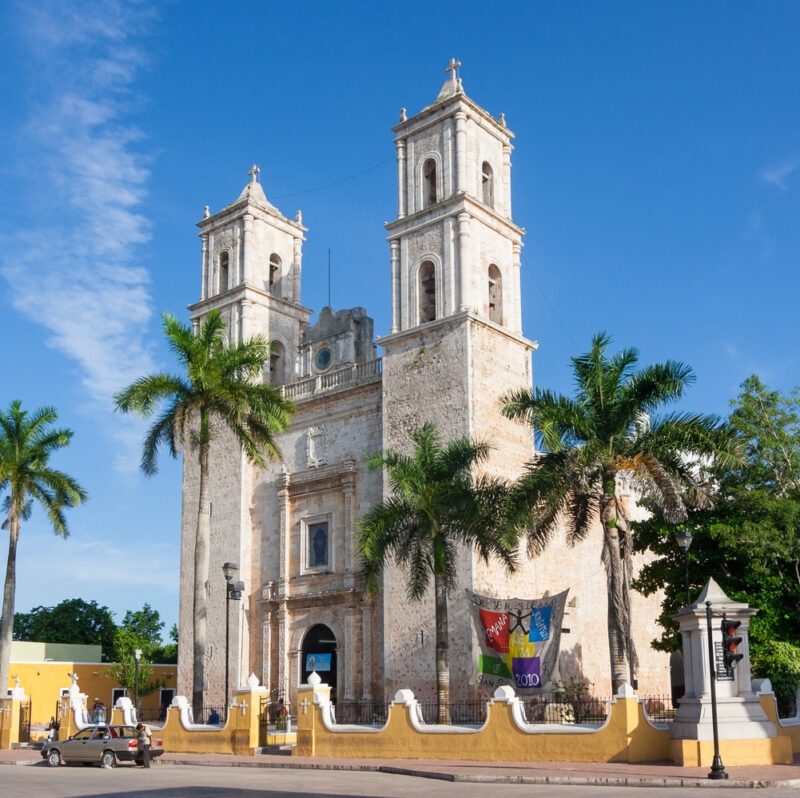The cultural centre of the Yucatán peninsula
As the cultural heart and capital of the Yucatán Peninsula, Mérida has seen its fair share of history and empires. The Mayas founded their city of T’ho here, before Spanish invasion and European trading routes made it a hub of immense wealth. Today, the town is both an eclectic mix of everything that has paved the way to its present day, while also proudly back where it began, calling itself home to the largest indigenous population in Mexico.
Things to do in Mérida are plentiful: explore its sunsoaked central plazas and narrow hidden streets, visit the Catedral de San Ildefonso, or educate yourself on Maya history at some of the region’s best museums, such as the Gran Museo del Mundo Maya. It’s also a great base from which to visit some of Mexico’s most important Maya ruins, including Chichén Itzá and Uxmal ruins.
Beyond the ruins, the modern day landscapes also hold plenty of charm. Dive into the cool waters of cenotes (natural bore holes), or relax at the Gulf coast’s quaint seaside villages or the pleasant town of Izamal. Mérida itself is artsy and inviting – markets colour busy streets with local crafts and souvenirs, coffee shops and restaurants line the Paseo de Montejo, and in the cooler hours after sunset, the sound of music and animated chatter wafts from cheerful bars.
Highlights
Learn about Maya culture and history at the Gran Museo del Mundo Maya
Explore the sites of impressive Maya ruins nearby, including Chichén Itzá and Uxmal
Swim in the crystal clear waters of nearby cenotes
Mérida weaves a fascinating tapestry of Mexico’s history, bringing together threads of indigenous culture, Spanish colonial influence and trans-Atlantic trade. Learn about its history through its excellent museums and galleries, or simply by walking its storied streets.

Dan Scott-Kerr
Travel Designer
Luxury accommodation in Mérida
Why book with Jacada?

Personalised design
We’ll plan your trip around your specific interests, tastes and preferences, providing helpful tips and honest advice based on first-hand knowledge of the destination.

Authentic experiences
Our expert guides and brilliant travel concierges are hand-picked to provide a genuine experience, bringing your destination to life with care and passion.

Responsible travel
Our luxury trips are designed with responsible travel principles that prioritise travel experiences that are both good for you and good for the planet.
Trip inspiration
Discover more of Mexico

Campeche
A pretty, relaxed active port city, small enough to wander around easily. A history of pirates and acquisitions with old world architecture and stunning views from naval ramparts.
Discover more
Cancun
A convenient jump off point with an international airport and easy access to the Yucatan Peninsula. There are many luxury resorts here to make layovers extremely comfortable and enjoyable.
Discover more
Isla Mujeres
Rustic beach bars and a sleepy atmosphere. A great place to come to relax and enjoy sunsets, boat trips and delicious seafood.
Discover more
Izamal
A beautiful little city, punctuated by white and yellow buildings. Close to the Puuc route the Mayan history is palpable here and in fact, the ancient Mayan language can still be heard among the locals here.
Discover more
Mayan Riviera
One of the most beautiful beaches on the Yucatan peninsula, if not the whole of mexico. Huge expanses of white sands are home to some of the country's most well known luxury resorts.
Discover more
Mexico City
A ‘megalopolis’ of a city, incredibly diverse, rich in many cultures, historical yet modern, contemplative yet chaoticic. Stunning boulevards and winding cobbled lanes are filled with adventures waiting to be discovered.
Discover more
Oaxaca
The city of Oaxaca is home to one of the country's most outstanding cathedrals. See the Zapotee legacy and enjoy the many archaeological ruins and historical excursions of the region.
Discover more
Puebla
Puebla is the country’s fourth largest city and lies in a valley ringed by impressive, snow-capped mountains and volcanoes. Once one of the most important cities strategically to the conquistadors, Puebla is steeped in history and features some striking architecture.
Discover more
San Miguel de Allende
A cultural hub with a mesmerising historic quarter, important historical significance and visually beautiful. Brightly coloured buildings and murals line the cities streets.
Discover more
Tulum
Where white sand beaches, lazy green palms and laid-back hippy chic meet ancient mayan ruins and protected biospheres.
Discover moreMeet your Latin America team
When to visit
The year in Mexico can be divided in a wet and a dry season. Running from November to April, the dry season signifies cooler temperatures and less humidity, while from June to October the wet season brings daily rain showers. We recommend avoiding September to mid-October, which is hurricane season along the coast.

Rainy season
June – October

Dry season
November – April
Mexico travel guides
Plan your trip to Mérida
Whatever you want from your adventure in Mérida, our team of expert travel designers are ready to help.


Plan with peace of mind
When you book a trip in today’s world there’s a lot to think about. But with the right advice and expert planning, you can do it with confidence.
If you book to travel with us but your plans are impacted by circumstances you can’t control, we’ll change your reservation or cancel your booking for a full credit towards future travel.


































